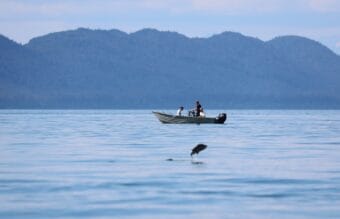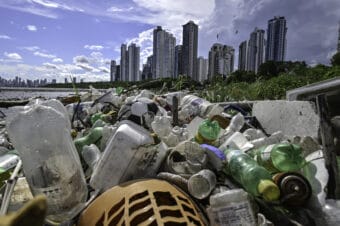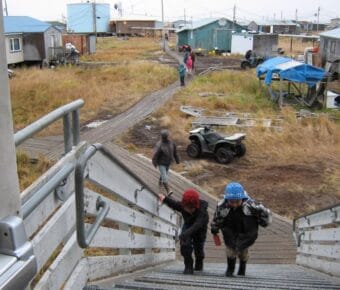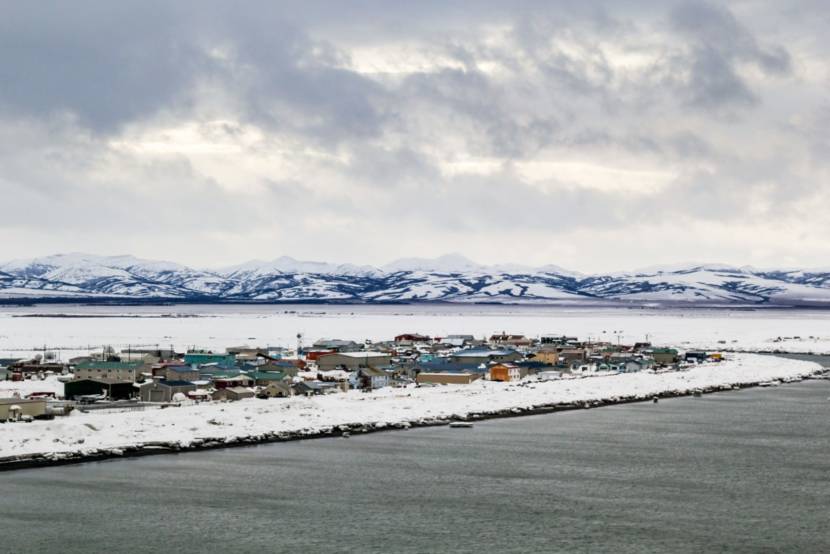
NOAA’s annual Arctic Report Card, released on Tuesday, shows the changes brought by a rapidly warming Arctic — more rainfall, shorter periods of snow cover, shrinking sea ice and shifting seasons.
But this year’s report card has something new: a chapter on the consequences of climate change for people who live in the Arctic. It’s a collaboration between scientists, Indigenous knowledge holders and decision makers across Arctic communities in Alaska.
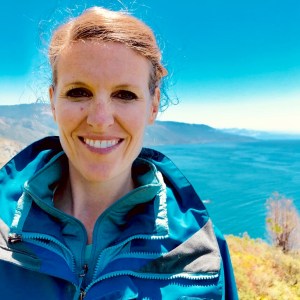
Athena Copenhaver, executive director of the Study for Environmental Arctic Change, said the chapter highlights highlights a different perspective for what is largely a scientific publication.
“It brings in Indigenous knowledge and features the impacts to Indigenous people first and foremost,” she said.
The chapter includes a video, an oral history by the Ahtna Dine’ storyteller Wilson Justin. He describes his experience living with climate change. In the video, he says climate change in the Arctic has already happened, and he reflects on the need for collaboration between scientists and Indigenous knowledge holders going forward.
“The trainwreck already happened. We’re just going to have to figure out how to speak to each other in terms of, not only how we are rebuilding, but what it is we are going to rebuild,” Justin says in the video.
‘We live on that thread of hope’
Indigenous food systems in the Arctic are intimately tied to a cold, icy environment, but the science in this year’s report card shows that those conditions are becoming harder to rely on. In a host of different ways, more rain and less ice are making food sources scarcer and harder to get to.
The report warns that some climate models predict a shift from a snow-dominated to a rain-dominated Arctic, possible by the end of the century. This year was the third wettest year on record for the Arctic, and precipitation has been increasing across all seasons. Freezing rain is also getting more and more common, even in winter months.
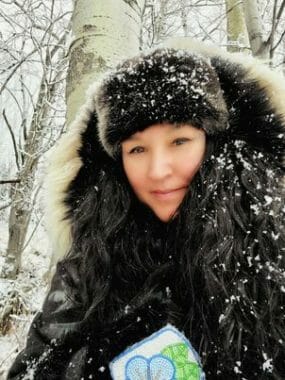
Co-author Jackie Qatalina Schaeffer is Iñupiaq from Kotzebue and the director of climate initiatives at the Alaska Native Tribal Health Consortium. She said winter rain events will have a profound effect on Indigenous food security, in part because of their impact on animal foraging.
“When you have freezing rain in the fall, or in the middle of winter, and it disrupts the food access for caribou, it’s a ripple effect,” Schaeffer said. “It impacts people, it impacts their traditional lifestyle. And then it impacts what’s coming next season.”
Schaeffer believes freezing rain could impact other food sources too.
“It could disrupt the berry season. Or it could disrupt the bird migration because they can’t access food,” she said.
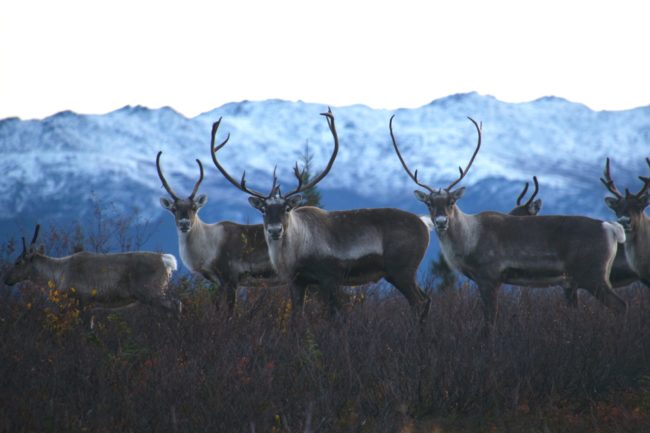
A report this fall cited winter rainfall as one of the causes of the Western Arctic Caribou Herd’s decline.
Sea ice is also changing rapidly, with less in the summer and later formation in the fall. Vera Kingeekuk Metcalf is Yup’ik, originally from St. Lawrence Island, and the executive director of the Eskimo Walrus Commission. She says sea ice — siku in Yup’ik — characterizes the seasons in the Arctic.
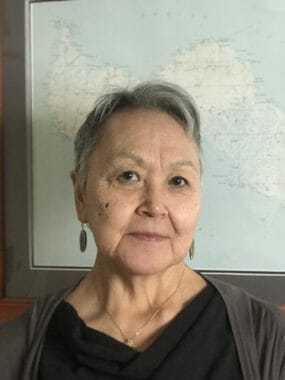
“It’s a very powerful presence in our relationship with our world. Here in the Arctic, it really defines our seasons and activities,” Metcalf said. “And right now, here in Nome, we don’t have sea ice yet. And it’s the middle of December.”
Metcalf is also a co-author on the new section. She says changes to the ice are already altering hunting and foraging practices.
“We’re experiencing more and more sea ice that is weaker. It affects our traditional hunting seasons, which seem to be dissolving and blending together,” Metcalf said.
The report emphasizes an increase in fatal falls through sea, lake and river ice.
“Our hunters are traveling further with less sea ice and what seems more like disruptive stormy weather during some of our hunting trips, ” Metcalf said.
And in some instances, the absence of ice leaves communities more vulnerable to extreme weather events. Lack of sea ice contributed to greater damage across Western Alaska when the remnants of Typhoon Merbok, which was fueled by warmer ocean temperatures, lashed the coast with 50-foot waves and hurricane force winds this September.
Metcalf witnessed the damage to subsistence camps around Nome.
“That just made, you know, devastated coastal camping areas and just changed the environment in a way that we didn’t expect it to happen,” she said.
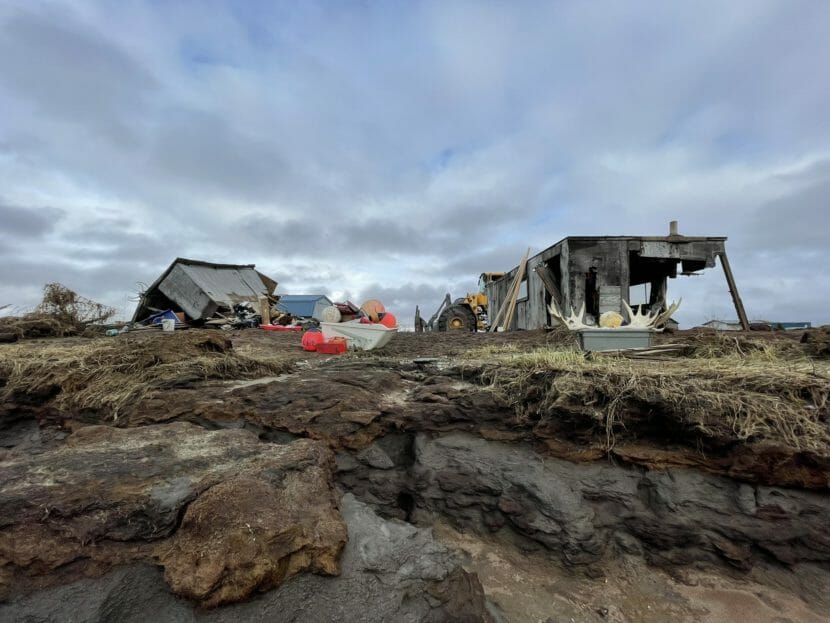
The storm also caused severe flooding for communities on the coast of the Bering Sea. Power outages caused losses of meat already gathered, boats and equipment were wiped out, and fall hunts were delayed.
The report also highlights changes that aren’t yet well understood, like the years-long seabird die-off in the Bering Strait region. Many species of ducks, puffins, shearwaters and auklets — important food sources and vital indicators of overall ocean health — have been hit hard by starvation despite their different diets.
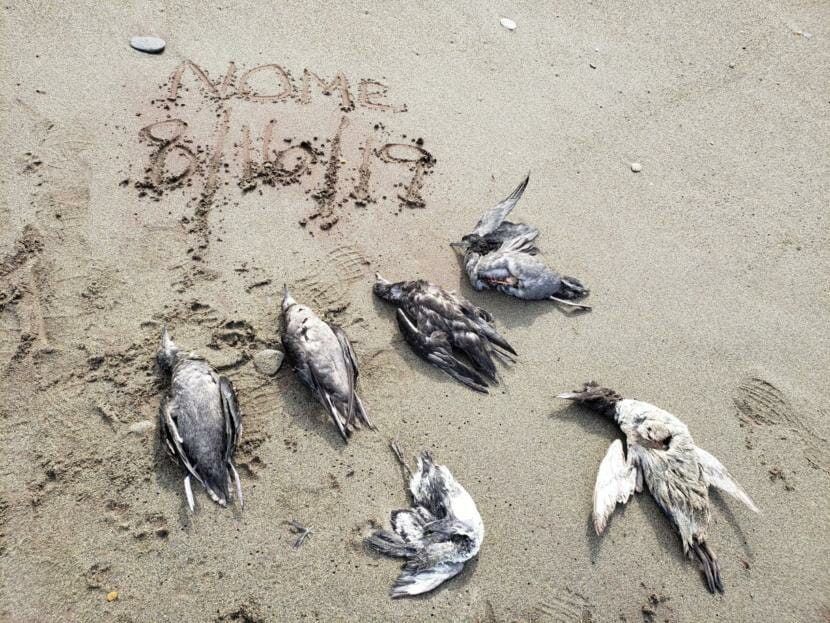
Despite these profound changes in the Arctic, both Metcalf and Schaeffer said Indigenous values around food prevail despite unpredictable seasons and conditions.
“We don’t say — and we definitely don’t think it and put it out into the universe — that there’s not going to be any berries,” Schaeffer said. “We hope. We live on that thread of hope that there’s going to be berries, whether they show up or not.”
‘Living the environment’
For Schaeffer, the addition of this new chapter to the Arctic Report Card, and the work of the Study of Environmental Arctic Change in general, is a way to infuse more of that hope into conversations about climate change in the Arctic.
“The narrative, if you just focus on the science and the monitoring, could be very scary,” she said. “And we don’t want people to be scared.”
This year’s report card is a step towards integrating Indigenous knowledge with science. But Metcalf says that doing so is challenging.
“How this actually happens can be complicated because Indigenous knowledge and science should not be used, for example, to verify each other,” she said.
But Metcalf says more on-the-ground observations from Indigenous knowledge holders will only strengthen the science.
“Our own experts are living the environment, or they’re seeing the changes happening in our waters and our lands, often are the first to report these unusual changes to this environment,” Metcalf said. “The longtime people that have been there are experiencing these changes for many years.”
Metcalf sees the new chapter as an encouraging step towards exchanging more information across different knowledge systems.
“The Arctic is our home. And it’s very eternal and very sacred to us, for those of us that live here,” she said. “Perhaps, collaborating on co-production of knowledge and research is simply another way that we are adapting.”

